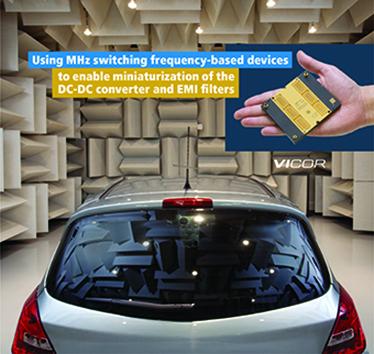Features

MHz switching frequency-based devices enable miniaturization of the DC-DC converter and EMI filters
Achieving EMI conducted emission compliance for automobiles with a single stage filter. By Nicola Rosano, Sr. Strategic FA/System Engineer at Vicor
More details...
AC/DC power factor correction module offers up to 1,512W
A full brick package developed by TDK-Lambda, the PF1500B-360, is for high voltage distributed power architectures
More details...
A full brick package developed by TDK-Lambda, the PF1500B-360, is for high voltage distributed power architectures
More details...
Power Electronics Europe Issue Archive
Issue 2 2009 - DISTRIBUTED POWER
March 13, 2009
For high-end IT and telecom applications, the conventional approach to power conversion involves an AC/DC silver box followed by 12V-to-1.x V synchronous buck converter. This approach has inherent limitations in terms of system efficiency, due to a combination of distribution bus losses and fundamental restrictions in topology performance as processor voltages reach sub-volt levels.
Recent advances in power train technology can better meet such power conversion demands by, for example, eliminating step-down stages and enabling direct 48V to-load conversion. Higher (48V or 50/380V) bus voltages reduce distribution losses, but usually mean the addition of an extra stage or stages to get down to the processor voltages, which may lower conversion efficiencies. The approach of Factorized Power Architecture (FPA) improve high power system
efficiency. Full story on p 29.
| Home / News / Features / Events / Media Data / Issue Archive / Magazine Subscription / Contact Us
| Privacy Policy | Site Map | © Copyright DFA Media
| Web design by Immersive Media
| Privacy Policy | Site Map | © Copyright DFA Media
| Web design by Immersive Media



